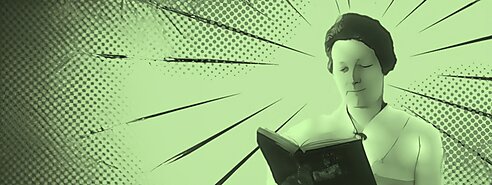Read and Respond to a Primary Source
First, read Wills’s obituary in the May 30, 1964, edition of the British Medical Journal. It includes this praise, “Her generosity and magnanimity, combined with outstanding ability and resolution, made friends of all who ever worked with her and found her worthy of profound respect and deep affection.”
Wills’s obituary also says, “At this time [in the 1920s] she was also giving voluntary service to the Royal Free Hospital, undertaking biomedical research in the maternity wards.” © 2023 Cato Institute Opportunities for women to do medical research were limited in the early 20th century. Evidently, Wills was working as a researcher without pay, even though she was a licensed medical doctor in her late 30s at the time. Later, she became more prominent and held paid positions at various institutions.
Think about a goal you want to reach over the next two to three years. It may be passing a difficult class, getting a better‐paid job, winning a championship, or getting into your dream college. Imagine yourself achieving that goal.
With that image in your mind’s eye, answer these questions in a paragraph of five to seven sentences:
This type of thought experiment is an ancient practice called premeditatio malorum (premeditation of evils). It’s one way to be better prepared for the challenges that will come your way.
- What is one goal you want to achieve over the next two to three years?
- What are some of the obstacles you may encounter before you reach that goal?
- What sacrifices will you need to make to achieve that dream?
Interview an Elder
During World War II, the Germans bombed Wills’s research laboratory. After the war, Wills wrote about the attack in an academic journal article:
An experiment was started at the end of 1943 planned to show the effect on the haemoglobin level and on the general health of the pregnant woman, not only of the improved rations but also of the routine administration of iron…. Unfortunately, a flying bomb incident interrupted the work, but though the actual number of observations were not as large as expected, they were large enough for statistical analysis.
Using the phrase “flying bomb incident” to refer to a Nazi missile attack on her research lab shows Wills’s understated wit, strength, and determination. She was a fiercely independent and resourceful woman who persevered despite setbacks.
Successful people like Lucy Wills have character traits we can emulate and use to guide our lives.
Choose an older person you know to interview. Your interviewee could be a parent, grandparent, neighbor, coach, boss, teacher, or family friend. The person must be at least 20 years older than you.
Ask the person if they are willing to be interviewed. Explain that you will take 10 to 20 minutes of their time. Below are some sample questions to get you started on your interview. Please share these questions with the interviewee beforehand.
Sample Interview Questions:
- Please tell me a bit about your story
- What have been some of the biggest obstacles you have faced in life?
- How did you overcome these obstacles?
- What are your sources of strength when faced with challenges? For example, family, religion, friends, or philosophy?
- What advice do you have for me when I encounter setbacks?
Of course, you may ask other questions to help you understand this person’s sources of strength.
After the interview, write a 500‐word essay. Your essay must include the following:
- Demographic information about the interviewee (age, occupation, etc.)
- Three obstacles this person has faced in their life
- Their sources of strength when faced with challenges
- Advice to you on how to overcome setbacks
You must write in complete sentences and cohesive paragraphs. Include a topic sentence in each paragraph. Be creative and use your own voice. What surprised you about this debate?

